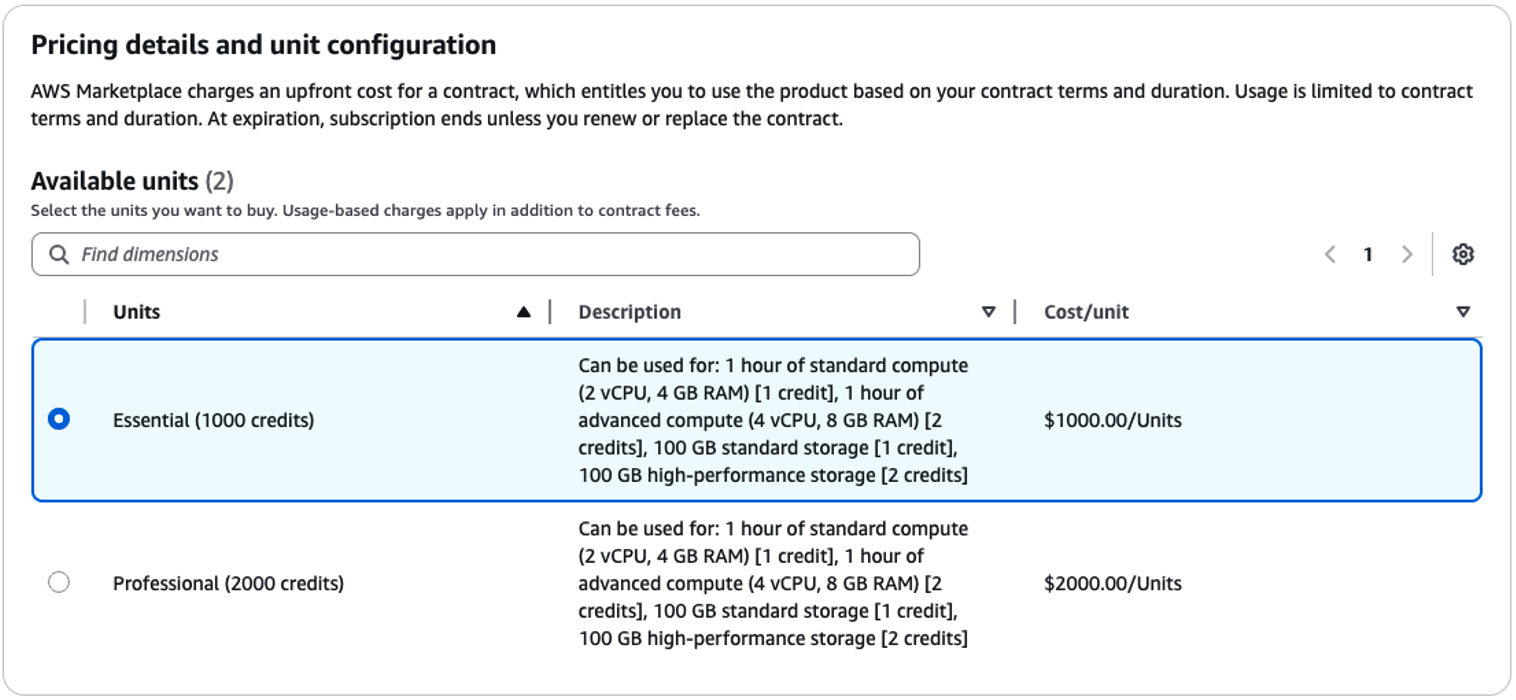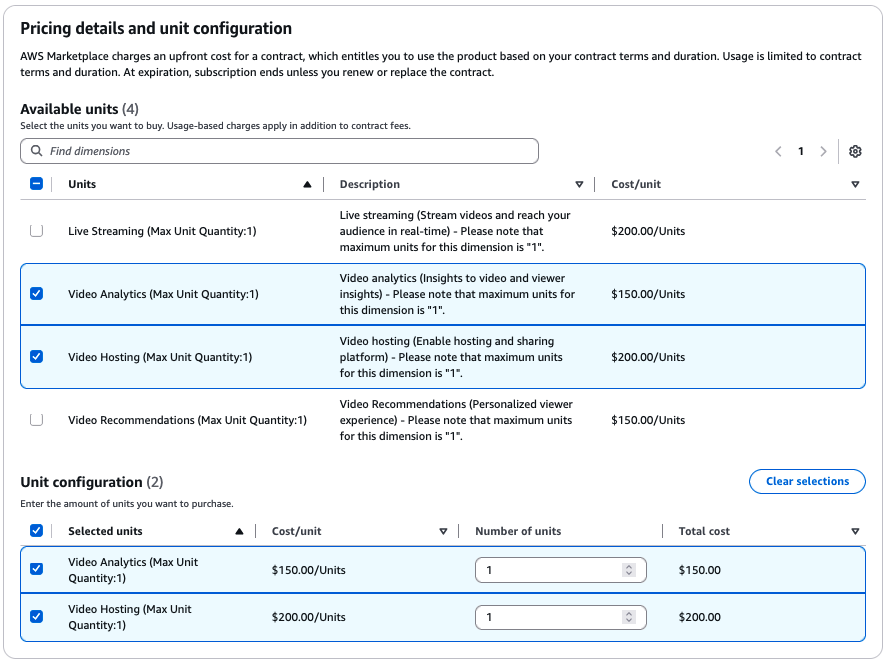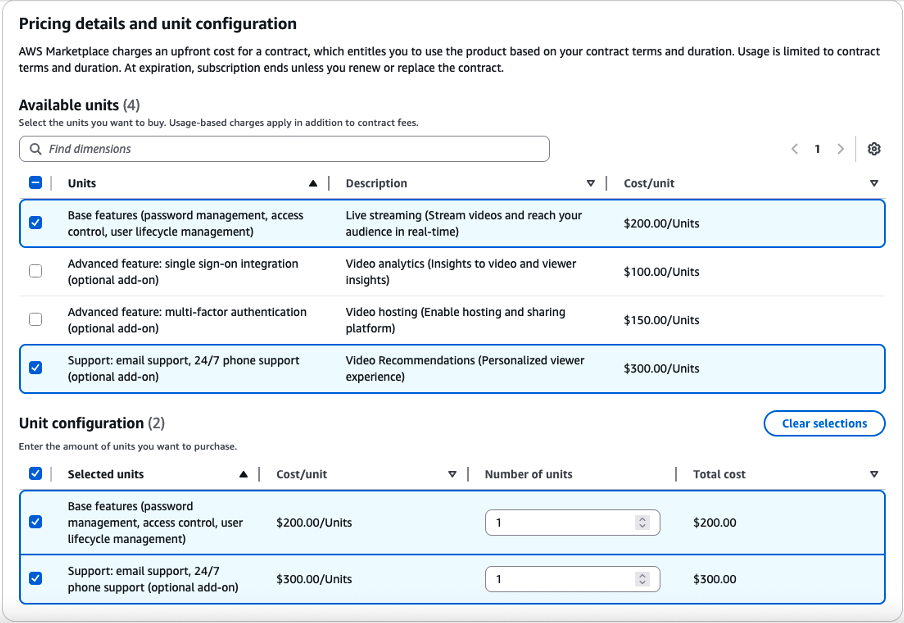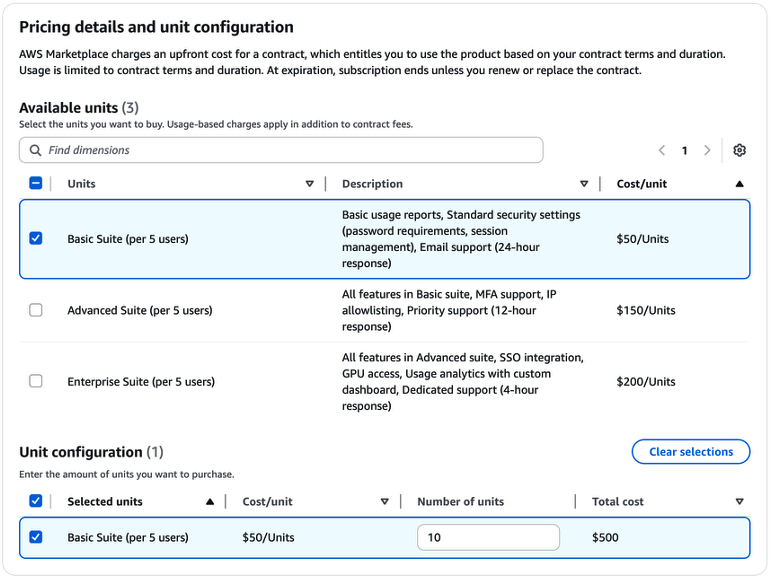AWS Marketplace
Implementing SaaS contract pricing models in AWS Marketplace
Software-as-a-service (SaaS) vendors expand their reach and scale their businesses by bringing their products to AWS Marketplace. Planning for and understanding AWS Marketplace pricing strategies helps vendors shorten their time to market and maximize their success as sellers. AWS Marketplace offers three pricing models for SaaS products: contract, subscription, and contract with pay-as-you-go.
This post focuses on the contract pricing model, covering three common configurations and helping you determine which approach works best for your product.
Prerequisites
To begin listing products in AWS Marketplace, you must complete the following prerequisites:
- Have a SaaS product to sell in AWS Marketplace
- Have a clear understanding of your product’s pricing strategy
- Register as an AWS Marketplace seller
- Have access to AWS Marketplace Management Portal
Implementation SaaS contract pricing
There are three common SaaS contract pricing configurations: tiered contracts, feature-based contracts, and feature-based contracts with quantity selection. In tiered contracts, customers select one tier from multiple predefined tiers. In feature-based contracts, customers purchase one or more features. In feature-based contracts with quantity selection, customers purchase one or more features in multiple quantities.
In this section, we show you how to implement common patterns for each contract pricing configurations.
Tiered contracts pricing
Tiered contracts are well suited for products that naturally segment into distinct service levels (for example, Basic, Professional, or Enterprise) with clear value differentiation. These tiers typically bundle related features and capabilities that progress from basic to advanced functionality.
For example, if your product includes usage limits, capacity thresholds, or credit-based systems that align with different customer segments, tiered contracts provide a straightforward way to package and present these offerings.
To configure tiered contracts, take note of the following steps when creating SaaS listing:
- In the Configure product pricing step, select Contract as the pricing model. Define your pricing dimensions according to the predefined tiers of your product.
- In the Review prices step, select Single dimensions per contract as the purchasing option. This way, buyers can choose from a list of tiered pricing dimensions to purchase their desired tier or volume of units.
Detailed steps on how to create a SaaS listing are found in the AWS Marketplace seller workshop.
The following figures show examples of tiered contracts.

Figure 1: Sample Tiered Contracts Pricing Purchase Options (Security solution with usage limits)

Figure 2: Sample Tiered Contracts Pricing Purchase Options (Compute solution with credit-based system)
Feature-based contracts pricing
Customers can select specific features rather than predetermined bundles through Feature-based contracts. Feature-based contracts work well for products with optional add-on functionalities or specialized capabilities that appeal to different user segments. Your customers can create customized solutions by selecting only the features they need.
Customers can enter the units they would like to purchase for each selected feature. AWS Marketplace does not enforce quantity limits. Therefore, sellers must indicate any quantity limitation in the pricing dimension name or description. For feature-based contracts pricing, indicate that “1” is the max quantity.
To configure feature-based contracts, take note of the following steps when creating SaaS listing:
- In the Configure product pricing step, select Contract as the pricing model. Define individual features as the pricing dimensions.
- In the Review prices step, select Multiple dimensions per contract as purchasing options. This way, buyers can purchase their desired quantities of unit for each pricing dimension that you define.
Detailed steps on how to create a SaaS listing are found in the AWS Marketplace seller workshop.
The following figures show examples of feature-based products.

Figure 3: Sample Feature-based Pricing Purchase Options with quantity limit indicated (Video hosting and streaming service)

Figure 4: Sample Feature-based Pricing Purchase Options (Identity Management solution)
Feature-based contracts with quantity selection pricing
This configuration builds on feature-based contracts. It works well for products where customers need varying quantities of specific features. For example, a collaboration platform might allow customers to select team workspaces in increments of five. Instead of having multiple independent features to accommodate the varying configuration options, use one pricing dimension that offers five workspaces as a feature and allow the customers to purchase multiple counts of this feature. This approach simplifies the pricing configuration while serving the same intent in terms of purchase options.
Feature-based contracts with quantity selection may have considerations for minimum and maximum number of units purchased for a specific feature. Sellers need to indicate this information in the pricing dimension name or description.
To configure feature-based contracts with quantity selection, you can use the same configuration steps described in the preceding section, Implementing feature-based contracts pricing.
The following figure shows an example of a feature-based product with quantity selection.

Figure 5: Sample feature-based pricing with quantity selection (Tiered Workspace solution)
The examples we covered showcases how AWS Marketplace can accommodate diverse business models while maintaining a consistent customer purchase experience. The key to successful implementation lies in aligning pricing structure with both business goals and customer purchasing patterns. This strategic alignment helps optimize market reach while simplifying operational overhead.
Conclusion
In this post, we explored how to implement three common SaaS contract pricing configuration configurations in AWS Marketplace, namely, tiered contracts, feature-based contracts, and feature-based contracts with quantity selection. Each configuration offers unique advantages for different product types and business objectives.
To get started with your SaaS contract implementation:
- Complete the mentioned prerequisites.
- Evaluate your current pricing strategy against the common SaaS contract pricing configurations to identify the best fit.
- Review the AWS Marketplace SaaS contract pricing documentation for detailed implementation guidance.
- Create your product listing.
For additional support with your implementation, reach out to your AWS representative or AWS Marketplace Seller Operations for assistance. You can also explore more AWS Marketplace seller resources and best practices in the AWS Marketplace Seller Guide.